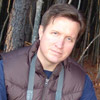Diversity Makes Science Better (and it makes us better, too)
- Published4 Feb 2017
- Author Dwayne Godwin
In the debate over refugees, immigration, and terrorism, the impact of policy on the practice of science and its role in American prosperity is being ignored. "Ill Considered, Badly Delivered" This phrase was used by former Secretary of State Condoleezza Rice to describe the recent Executive Order signed by the president, which limited immigration from seven predominantly Muslim countries. This order had the effect of blocking entry into the U.S., and stranding non-U.S. citizen students and scientists who were in transit from the seven countries involved. In addition to immigrants who have not received a visa, legal immigrants and permanent residents with green cards were caught up in the confusion surrounding this executive order.
This ban was initially for 90 days, but it is unclear what will come after. Even now, courts are arguing whether the ban will hold. Students come to this country to not only learn about science, but also to learn about our culture and values. This exchange of ideas is incredibly important if our relationship with the rest of the world is to be a friendly one. The uncertainty this ban produces will likely result in fewer gifted foreign students making the journey to America to contribute to our research and knowledge. That would be a shame. When we first learn about the scientific method we are exposed to a shining ideal of an objective search for truth, and a powerful method of hypothesis testing and refinement by which we can get closer to it. But this description is incomplete.
Values, and by extension culture, shape the practice of science in many ways. Perhaps the most obvious is that it influences the choice of what to study, and the frame in which it is studied. Where a scientist is born, the language they speak, their surrounding natural world and life experiences can powerfully influence the type of scientific questions pursued, the methods used to pursue them and the ethical frame in which to pursue science. Nearly every scientist has these “origin” stories. I want to consider two:

Rita Levi-Montalcini, Nobel laureate.
In 1909, Rita Levi-Montalcini and her twin sister Paola were born in Turin, Italy. It would be 36 years before women could vote in Italy, and girls were trained to be mothers, not scientists. The death of a family friend inspired Rita to attend the University of Turin Medical School, where she met neuroanatomist Giuseppe Levi, who sparked her interest in the developing nervous system. In 1938, Rita had a job in Turin, but lost it when the dictator Mussolini passed laws that forbid Jews from professional careers. Levi-Montalcini had read of the work of Viktor Hamburger. By removing the growing limbs of chick embryos, Hamburger had demonstrated that the clusters of nerve fibers that would normally connect with them were reduced in size. Hamburger reasoned that an “inductive factor” was released by the limb that caused the cells neurons to grow into the limb. Inspired, Rita set up a lab in her bedroom and began studying developing nerves in chick embryos, from eggs she obtained from local farmers.
She applied Golgi’s method, which let her see that the nerves initially sprouted, but then died after the limb was removed, suggesting a growth factor released by the limb was missing. Rita pursued this finding even when the Nazis invaded Italy in 1943. Her family fled south to Florence, where she set up a second laboratory – which was just a corner of her bedroom. It was in 1946 that Rita went to Hamburger’s lab in America. After repeating her home laboratory experiments, along with Stanley Cohen she co-discovered the identity of Nerve Growth Factor (NGF). We now know that NGF was the first of a family of small proteins that are released to stimulate growth and development in the nervous system. This knowledge is critical in understanding both normal development and neurodegenerative processes.
Levi-Montalcini was awarded the Nobel Prize for this work. Would Levi-Montalcini have found the same interests, or would she have taken the same path to pursue them had she been born in China or Africa, or even if she had been born in the U.S.? We’d like to think so, but I am not so sure. Would she have discovered NGF? Without the unique scientific environment she enjoyed in Victor Hamburger’s lab (Hamburger was himself an immigrant), her life might have taken another path. If the United States had decided to ban immigration from a country that they had just defeated in the Great War, her Nobel Prize winning work might never have happened.

Ahmed Zewail (in the tie) with one of his lab groups. (Image:Caltech.edu)
These stories can be found in all sciences.
Ahmed Zewail
was born in Damanhur, Egypt, and grew up in Alexandria. His father worked as a bicycle mechanic. Zewail moved to the US, where he earned his PhD at the University of Pennsylvania. He eventually joined the faculty at the California Institute of Technology, where he accomplished his Nobel Prize winning work in femtochemistry, the study of very rapid transitions in chemical reactions. Zewail worked as part of a team, but he attributed his success to his early upbringing in Egypt and his love of learning to his early years spent in scholarly learning at his mosque. In 2009 President Obama appointed him to the President's Council of Advisors on Science and Technology, and he also was named the first United States Science Envoy to the Middle East.
This immigrant scholar made significant contributions to American science. Had his experience been different - if he had been banned because of his religion - would he have found a similar path to discovery? Thankfully, we'll never know.. These individuals, from different parts of the world, illustrate a broad spectrum of how science is pursued. Levi-Montalcini often toiled in her lab alone over a microscope, while Zewail led a multidisciplinary team. Science, engineering and mathematics can be lonely endeavors, but they are increasingly group efforts. The classical idea of a lone experimenter working to make new discoveries is now the exception, rather than the rule. Diversity, whether in the dimensions of race, gender, sexual orientation or culture, adds to our ability to solve important problems. It provides value precisely because our different perspectives and experiences create opportunities to view problems from a different angle. Just as science is not practiced in just one way, scientists aren’t all just alike - and they shouldn’t be. There’s also an economic argument to be made for sound and inclusive immigration policies that confer stability.
The CEOs of some of America’s most well-known and highly valued companies are immigrants or children of immigrants - including Elon Musk (Tesla), Sergey Brin (Google), Alexis Ohanian (Reddit), Jeff Bezos (Amazon), Jerry Yang (Yahoo), Pierre Omidyar (eBay), Steve Jobs (Apple), and Arash Ferdowsi (Dropbox) – responsible for trillions of dollars of economic activity. Each of these companies are backstopped by a host of immigrants working alongside natural born citizens who make important contributions to the American economy by practicing the essential science, engineering and mathematics underlying these companies’ successes. The fear of immigrants runs counter to our modern values as a nation, but it echoes similar discriminatory practices that have been directed at various times in our history to the Irish, the Japanese, and Jews - all of which are looked back on in disgust. Moreover, fear of immigrants runs counter to the collaborative nature of science, which knows no geographic boundaries.
The goal of terrorists is not to evoke rational fear, because rational fear can be understood, contained and guarded against. Ultimately, terrorists are not powerful – they are the desperate powerless. One of the real goals of terrorism is to elicit an outsized, irrational fear that causes us to harm ourselves – by promoting discrimination, provoking us to give away freedom in exchange for a perception of safety, or becoming a rallying point for those who would harm us. This irrationality is why isolated incidents have such power over the American psyche, causing us to ignore the very low risk immigration poses to our society and the clear benefits of a consistent policy. Students and colleagues who come to America to perform scientific research are our allies and friends. Refugees who flee oppressive and dangerous regimes share our enemies and deserve our compassion - not a slamming door. Arbitrarily banning them is, in my view, both morally wrong and logically indefensible.
I urge our current administration to work with scientific societies, technology-based businesses, American universities and congressional leaders toward immigration solutions that both protect our citizens and preserve our collaborative spirit.


















